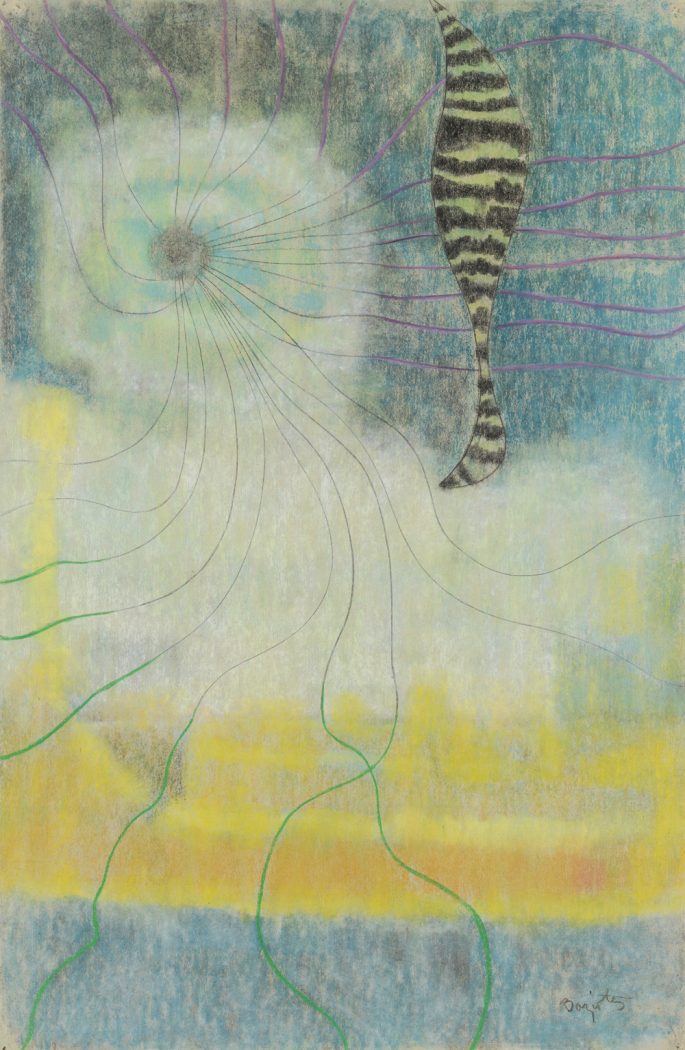
William Baziotes, Sea Forms, 1951. Pastel paper mounted on board. Whitney Museum of American Art, New York, purchase
“There is no particular system I follow when I begin a painting. Each painting has its own way of evolving…Each beginning suggests something. Once I sense the suggestion, I begin to paint intuitively.”—William Baziotes
William Baziotes, who studied objects at the American Museum of Natural History in New York, developed an interest in rendering the underwater world. Like Paul Klee, Baziotes strove to become one with nature by penetrating the mysteries of the world that lay hidden beneath the surface. Indeed, because of their close affinities, works by the two artists were shown together in several exhibitions throughout the 1940s and 50s.
In 1957, Baziotes and Klee were presented with French Surrealist Odilon Redon in an exhibition at the Contemporary Arts Museum, Houston. The three were “creatively joined,” the catalogue noted. “In their emphasis on the beginnings of creation, they have shown us that every existence is in a state of development—that every plant, flower, animal, and being is in a state of change—that change is the essence of all nature, all mankind, and all art. . . . Through the free use of imagination, intuition, and visions they have transmitted the secrets of the new worlds of flora, fauna, and beings.”
This work is on view in Ten Americans: After Paul Klee through May 6, 2018.
